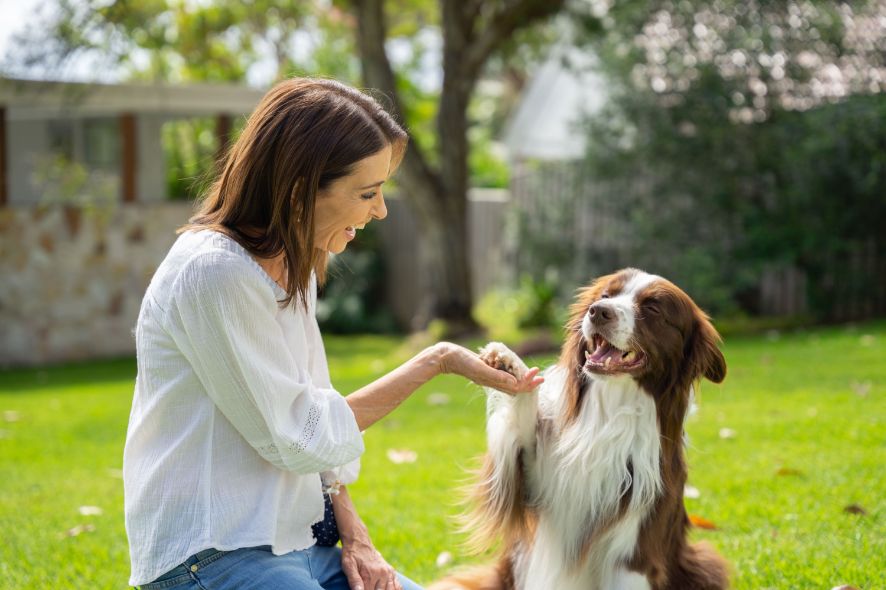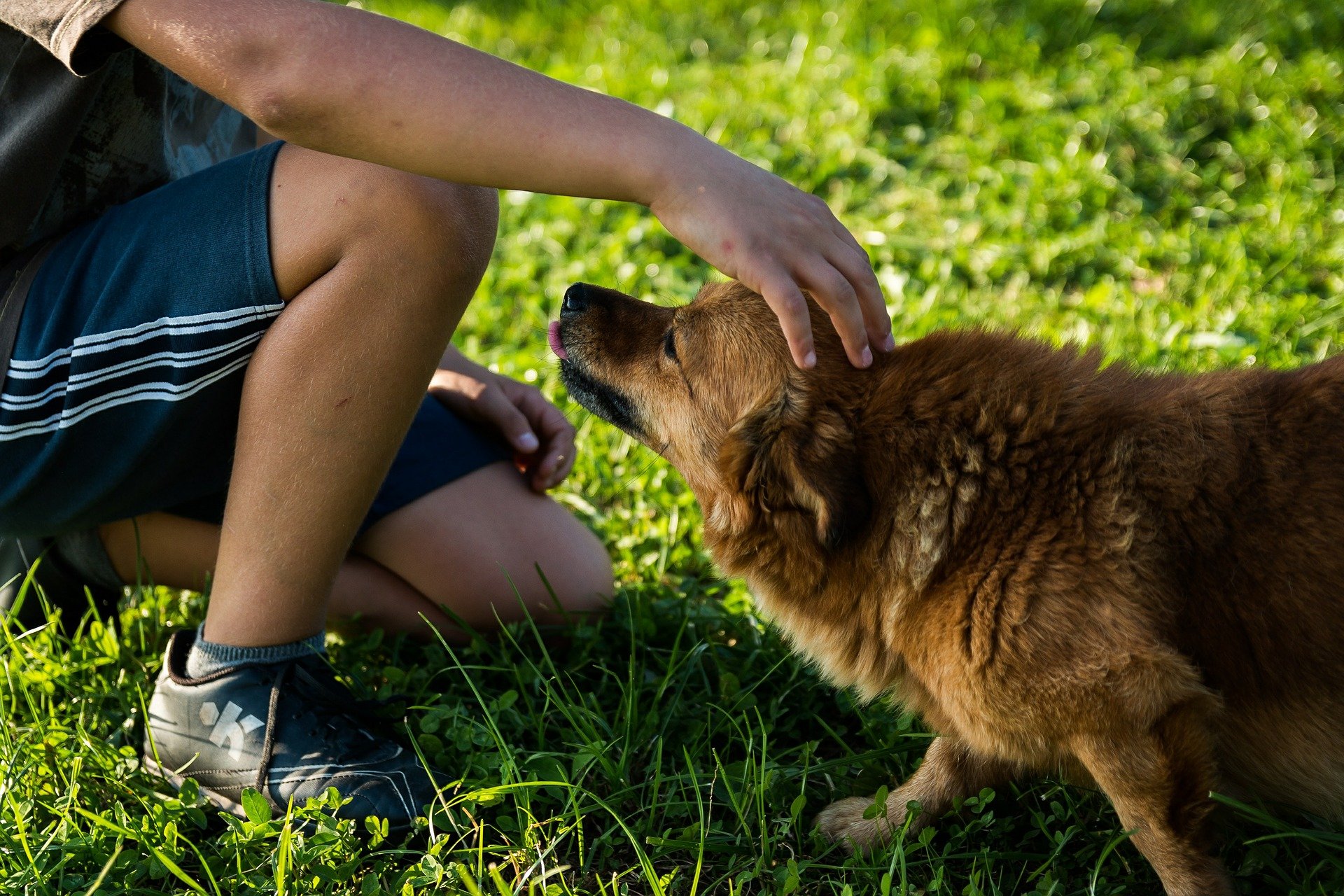
Last Updated on 2 years by Jenny Sovann
Ever heard of the 5 golden rules of dog training? What are they all about? The Paleolithic is such a great era for human beings. It is the era in which our stone age ancestors developed a mutual relationship with wolves. Through selective breeding and natural selection, they evolved into the diverse breeds of dogs we know today. This intriguing history is that of our furry friend as told by historians. It is comical thinking about Chihuahuas as wolves though. Despite this, our ancestors were able to train dogs throughout the ages and passed down this knowledge to us.
It is always a challenge to train these wolf descendants. Sometimes you give them a command with delight, and they stare at you as if you are a madman. They even push it a step further by ignoring your efforts completely. Their attention span can be completely grabbed by a butterfly and they will leave you feeling lost. As much as we might feel overwhelmed training our furry companions, it can be done. If our ancestors did it, then that means we have learned something over time right? Well, the transcended knowledge has given us rules that we can use to tame our furry companions. Strap on us we dive into the 5 golden rules of dog training which will ensure that your efforts don’t go in vain.
Understanding Your Dog’s Behavior
It is pointless trying to teach a canine companion that you don’t fully understand. Dogs are amazing creatures that have varied personalities, and understanding this will be beneficial to your training. Trying to understand a dog’s behavior can sometimes feel like trying to play chess blindfolded. With the power of basic observation and research, we can crack this code though. First, check on the body language. Dogs can have varied postures and expressions that show interest and boredom.
It is obvious you can’t teach a bored canine companion. You can also trigger their instinctual behaviors by using squeaky toys and so on. Dogs are natural hunters, and triggering their instincts can help with training. Checking up on the characteristics of the breed will also help you understand how to best approach the training. It is important that you understand your dog very well. The things to look out for are not limited to these. Also checking up on the medical condition of the dog will make you understand certain behaviors. Skin-irritated dogs tend to bite when touched, so that will help you choose how to approach training. Overall, you can’t create a relationship and training schedule without understanding your dog well. This should be the first step you take to ensure productive sessions.

Positive Reinforcement
Positive reinforcement is like a behavior adjustment spell that makes us magicians. This is basically a reward-based training technique. By rewarding your furry friend for certain good behavior, they will always want to replicate it to earn the same reward. The rewards can range from treats to playtime to good old praise. Our furry companions will always want to be on their best behavior knowing they will get something in return. This is a sure way to encourage positive behavior making it a golden rule in dog training.
There are a ton of other benefits positive reinforcement carries with it. It is a way that will improve your furry friends’ obedience. They will always want to follow instructions in order to eventually get their rewards. This will eventually also build trust and loyalty. This will create a healthy relationship with your dog, unlike fear-based training. Fear-based training only leads to fear, anxiety, and aggression. To make your sessions successful, ensure your furry friend feels rewarded for good actions. This will create the necessary mental stimulation for your dog to maintain good behavior. This will promote both good physical and mental health, improving their overall well-being.
Consistency
It is important that we have precise expectations. These expectations can only be met if we drill the instructions down like a sergeant in the army. Consistency is the key to ensuring that our dogs understand that the commands are not a one-time thing. We could establish a routine that is keen on ensuring our dogs don’t forget what they have learned. This is what makes them understand they can only have meals at certain times, not play in the house among other things that make your life easier. It is also an essential aspect in ensuring that your dog will always associate a command with a certain action.
This golden rule will ensure there is no confusion and stress. The overall obedience of your canine companion will improve drastically and gradually. This will also further strengthen your bond with the dog, which makes your interactions always productive and enjoyable. It will build the trust and confidence of your furry companion. Your dog will always know what to expect and feel more secure and likely to follow your commands. Keeping the sessions consistent will help your dog adjust to the new behaviors and strengthen your relationship, this is basically a win-win situation for any dog trainer.
Socialization
It is unavoidable that your dog will have to eventually meet other people and animals. It will be very unfortunate if your furry companion were to show aggression, fear, and anxiety during this period. These situations are bound to occur if your canine companion is not well-socialized. Socialization is important to ensure that your dog is well-adjusted and well-behaved in various situations. Furthermore, it will increase the overall confidence of your dog in new situations. Surprisingly, socialized dogs have been shown to have more exercise improving their physical health. This will help your canine companion build trust and be trained more easily.
Taking on this challenge will involve you starting with the basics. By introducing your dog to new sights, sounds, and smells in a safe and controlled environment, you will make him capable of adjusting to change. Not only this, but you will have to gradually introduce your dog to other dogs and people. This will make it easier for you to take your dog for walks without him/her being menacing. A socialized dog is an easier dog to learn new tricks.
Patience
Training takes time, and this can seem to be challenging to people. It is important that you practice repetition and consistency to ensure that your furry companion grasps your intention. Every dog is unique with varied personalities hence each dog poses a different challenge. Some dogs may learn faster while others may take time. Different temperaments, learning styles, and past experiences will affect the process and hence patience is important for effective teaching.
Using positive reinforcement will gradually pin your instructions on your companion. Patience will go further in strengthening trust and respect between you and the dog. Overall, patience is a golden rule that will create a positive relationship based on trust and understanding.

Frequently Asked Questions
To further give you a better understanding of the 5 golden rules of dog training, here are some frequently asked questions to get you through.
How can you train a dog to walk on a leash without pulling?
You can start by ensuring your dog gets used to wearing a collar and leash. Using positive reinforcement to make them feel comfortable with the leash and collar will ensure they are not violent to them. Keep practicing consistently in familiar places first.
Common mistakes to avoid when training a dog?
Punishing your dog or showing signs of aggression toward your dog for bad behavior will make the dog feel anxious, scared, or aggressive. Also being inconsistent, and overwhelming your dog with too many commands will also be unproductive.
What is positive reinforcement?
It is a training technique that involves rewarding good behavior shown. Rewarding a dog for good behavior by giving it treats, praise, or physical affection will plant and reinforce the idea in the dog. They are likely to repeat the good behavior to earn their reward.
Can you train an old dog new tricks?
Yes, it is possible to teach an old dog new tricks. It may take a longer time to adjust their behaviors but they are still capable of learning and adapting. You will have to be consistent and apply a good amount of patience.
Common behavioral problems in dogs?
Behavioral problems in dogs can include aggression, destructive behavior, separation anxiety, fear, excessive barking and whining among others. These problems can be addressed through proper training and behavior modification.
Conclusion
In conclusion, understanding your dog’s behavior, positive reinforcement, consistency, socialization, and patience are the 5 golden rules of dog training that will develop a well-trained furry companion. Dogs are sociable creatures making them enjoyable companions to teach. Your training sessions will be entertaining for both you and the dog, so it is important to first understand them. Implementing these cardinal rules will make the sessions far more enjoyable for you and your canine companion. Overall, let’s not waste the 15,000 years of domesticating dogs. These cute descendants of wolves try their best to understand us, so it’s important to use our best ways to make them finally do. With that, get your collar and treats and ensure your furry companion eventually understands you.



